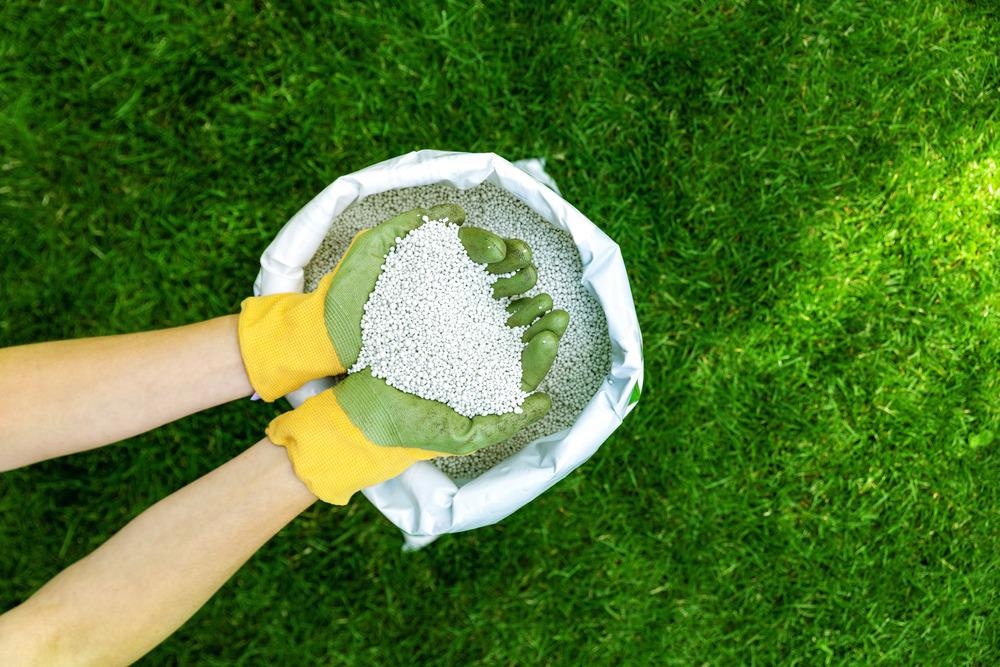A recent study published in the journal Chemosphere presents a novel CeO2 nanocomposite with multipotent micronutrient solubilizing bacterium (MSB) bio-inoculants as a bio-fertilizer.

Study: Application of a novel nanocomposite containing micro-nutrient solubilizing bacterial strains and CeO2 nanocomposite as bio-fertilizer. Image Credit: ronstik/Shutterstock.com
In current agronomic practices, synthetic fertilizers are employed to boost plant yield. They include harmful artificial substances that degrade soil quality, crop nourishment and contaminate the water column.
Agricultural products that are deficient in micronutrients (Zn, silicates, and selenium) can now be supplemented with micronutrients using fertilization.
Bio-Fertilizers; An Eco-Friendly Alternative to Chemicals
Synthetic fertilizers are commonly used to boost agricultural yields in soil that is depleted of nutrients due to pollution. The use of synthetic fertilizers increases food crop productivity in the region, allowing for exportation. However, these fertilizers harm the soil, induce water leakage, and indirectly impact the marine ecology and those who consume the product firsthand. They also affect the soil by lowering its long-term fertility and water retention.
Bio-fertilizers that are environmentally friendly have been shown to produce a specific microbial community that helps both the crops and the rhizobial soil. Plant fertilizers often include nanoparticles, which allow for the slow release and focused distribution of valuable nanoscale materials and increased plant productivity and reduced pollution.
Importance of Micro-nutrients
Micronutrients such as zinc, magnesium, chloride, and selenium are required in minute amounts for animal and plant survival and prosperity. They are indirectly required in the human diet. Micronutrient deficiency causes a variety of nutritional problems.
Zinc is required for the physiological and biochemical processes of crops, as well as the enhancement of photosynthesis. It's needed in a range of 5–100 mg/kg, with any amount below that causing significant malnutrition.
Zn is found in the soil in an impervious, chalky, and disintegrated state with a high pH. Selenium (Se) is a necessary mineral for human and animal health, and its deficiency causes cell damage.
Lettuce, cabbage, asparagus, soybeans, peas, bacon, meat, and fish all contain it organically. Inorganic Se may also be found in small amounts in the soil.
Silicate is present in insoluble forms such as phosphate and potassium, which are required for plant production and CO2 absorption.
Nanomaterials for Agriculture Applications
Carbon tubes, nanofibers, and nanomaterials are examples of nanotechnology that have recently sparked attention in the agricultural sector. When nanomaterials are covered with the desired substance and discharged into the soil, the intended material is taken up more effectively than non-engineered nanocomposites.
Fertilizers, insecticides, catalysts, and hormones are all examples of desirable materials.
Nanomaterials are of interest because they speed up plant growth and nutrient absorption. Cerium oxide is a semiconductor substance that has a wide range of uses in research. Because of its surface charge, cerium oxide nanocomposite is especially beneficial in transporting required minerals.
Objectives of Current Research
The primary goal of this study was to use micronutrient-solubilizing bacterial species to provide minerals to the soil, leading to increased plant development. The second goal was to investigate plant development using nanotechnology.
Moreover, the primary purpose of this research was to examine fenugreek seed and plant development under the influence of a new nanocomposite. This is because, in tiny amounts, CeO2 nanocomposite with a large specific surface area can be highly efficient. The study also looks at the impact of new micronutrient-dissolving microorganisms and CeO2 nanoparticles on plant development.
Findings and Conclusion
In this research, nanocomposites were compared to bio-inoculants as fertilizers, and it was shown that nanoparticles were more efficient than bio-inoculants.
Due to their adsorption process, nanomaterials have a high adhesion capability to bio inoculants. Stand-alone bio inoculants can diminish their efficacy and have a limited life span in the soil if employed. However, using CeO2 nanocomposite will gently release fertilizer into the soil environment, allowing the fertilizer to be absorbed for a prolonged period while reducing pollution.
For the fenugreek crop, the mixture of bio-inoculant and Ce-nanocomposite was shown to be an excellent biofertilizer. Bioinoculants fortified fenugreek plants, and agricultural production was also increased.
This novel bio-fertilizer can pave the way for further ground-breaking developments in the agriculture sector.
Continue reading: How Can Nanofertilizers Resolve Nutrient Shortages?
Reference
Sonali, J. et al. (2022). Application of a novel nanocomposite containing micro-nutrient solubilizing bacterial strains and CeO2 nanocomposite as bio-fertilizer. Chemosphere. From: https://www.sciencedirect.com/science/article/abs/pii/S0045653521022724?via%3Dihub
Disclaimer: The views expressed here are those of the author expressed in their private capacity and do not necessarily represent the views of AZoM.com Limited T/A AZoNetwork the owner and operator of this website. This disclaimer forms part of the Terms and conditions of use of this website.